HISTORIQUE
Our story, in which we develop our close relationship with Australia, begins when my wife, Colette Durand, and I arrived in Hendecourt as school teachers in September 1972. Back then, it was possible to find Australian “rising sun” badges and Australian shoulder badges in the ploughed farm fields around Bullecourt. We were interested to know why! During WW1 the area around Bullecourt was always under the control of the British troops. The French Army never fought at Bullecourt and it was impossible for us to find something in French about the WW1 battles. A friend, André Coilliot, was in possession of the Vol. IV of CW Bean’s “The Official History of Australia in the War” which we set about translating the part of this volume that was concerned with Bullecourt. Our interest was to inform people of this region what happened here during the First World War.
There were no Australian visitors to this region in that time, only British veterans from the “Bradford Pals” who visited Bullecourt every year. It was our first intention to fix a plaque for the remembrance of the Australians killed at Bullecourt. At the same time, I wrote to the Australian Embassy in Paris to ask some information at the AIF in France To my surprise I received a phone call directly from the Ambassador, His Excellency John Rowland. He provided encouragement to us in our quest for all of the time that he was in office in Paris. A small memorial was built near the St Vindicien Church in Bullecourt with stones from the original roadway. This was achieved with the encouragement of John Rowland, by André Coilliot (President of the “Souvenir Francais”), Jean Letaille (Maire of Bullecourt), Edmond Delattre and Jean Lacourt. The Ambassador assured us that he would be present for the unveiling of the memorial in May 1981, and he was. He initiated the revival of Remembrance at both Bullecourt and Villers Bretonneux. I am certain that without the assistance of John Rowland and his staff, nothing of merit would exist here at Bullecourt today.
A small memorial was built near the St Vindicien Church in Bullecourt with stones from the original roadway. This was achieved with the encouragement of John Rowland, by André Coilliot (President of the “Souvenir Francais”), Jean Letaille (Maire of Bullecourt), Edmond Delattre and Jean Lacourt. The Ambassador assured us that he would be present for the unveiling of the memorial in May 1981, and he was. At the same time André Coilliot and I decided to hold an inaugural ceremony for the memory of Australian soldiers killed at Bullecourt.The ceremony was at dusk at a place called “Six Cross Roads” in Bean’s volume. We planted a wooden cross at the cross road while a bagpipe player approached us slowly in the dark from a long distance away, playing the soulful “Lament”. The ceremony was a moving affair, attended by around 200 people.
There were no Australian visitors to this region in that time, only British veterans from the “Bradford Pals” who visited Bullecourt every year. It was our first intention to fix a plaque for the remembrance of the Australians killed at Bullecourt. At the same time, I wrote to the Australian Embassy in Paris to ask some information at the AIF in France To my surprise I received a phone call directly from the Ambassador, His Excellency John Rowland. He provided encouragement to us in our quest for all of the time that he was in office in Paris. A small memorial was built near the St Vindicien Church in Bullecourt with stones from the original roadway. This was achieved with the encouragement of John Rowland, by André Coilliot (President of the “Souvenir Francais”), Jean Letaille (Maire of Bullecourt), Edmond Delattre and Jean Lacourt. The Ambassador assured us that he would be present for the unveiling of the memorial in May 1981, and he was. He initiated the revival of Remembrance at both Bullecourt and Villers Bretonneux. I am certain that without the assistance of John Rowland and his staff, nothing of merit would exist here at Bullecourt today.
A small memorial was built near the St Vindicien Church in Bullecourt with stones from the original roadway. This was achieved with the encouragement of John Rowland, by André Coilliot (President of the “Souvenir Francais”), Jean Letaille (Maire of Bullecourt), Edmond Delattre and Jean Lacourt. The Ambassador assured us that he would be present for the unveiling of the memorial in May 1981, and he was. At the same time André Coilliot and I decided to hold an inaugural ceremony for the memory of Australian soldiers killed at Bullecourt.The ceremony was at dusk at a place called “Six Cross Roads” in Bean’s volume. We planted a wooden cross at the cross road while a bagpipe player approached us slowly in the dark from a long distance away, playing the soulful “Lament”. The ceremony was a moving affair, attended by around 200 people.
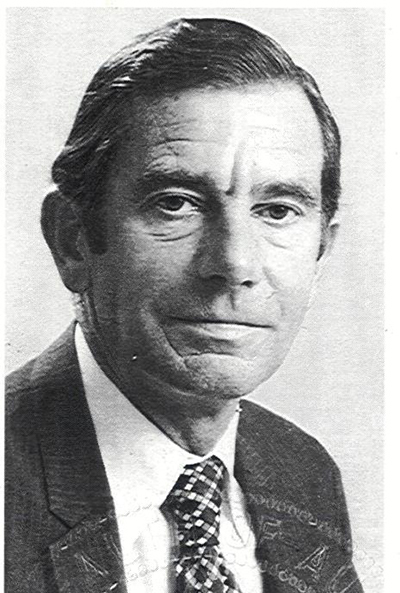 John Russell Rowland(1925-1996)
John Russell Rowland(1925-1996)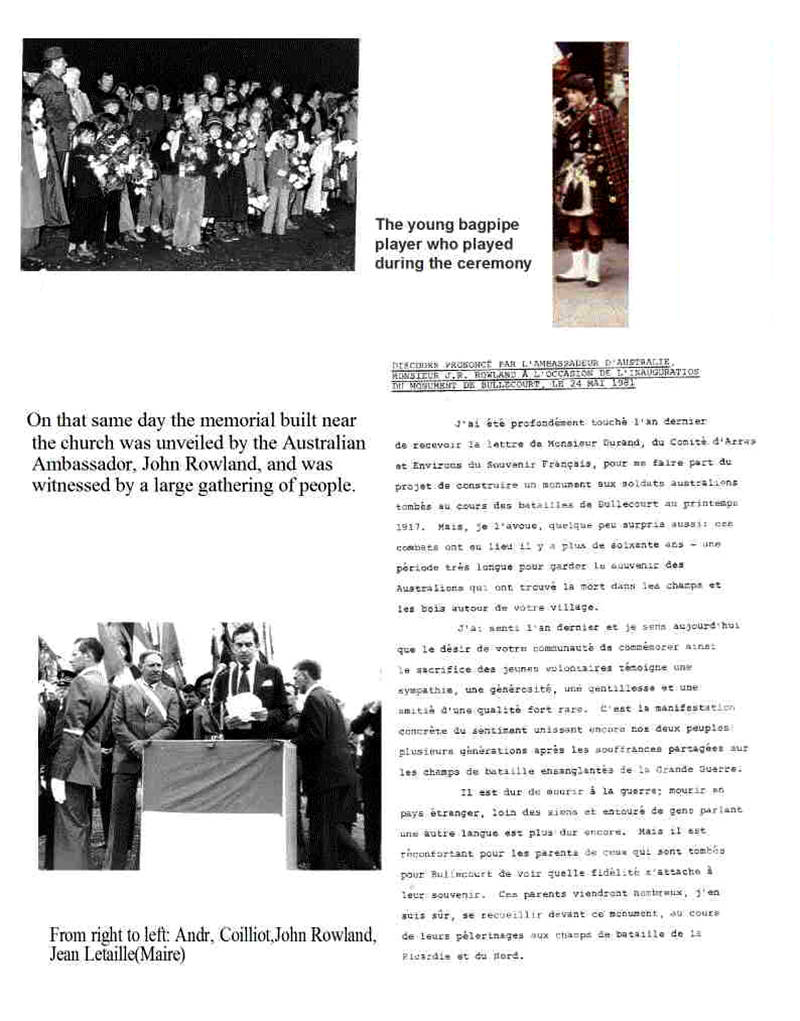

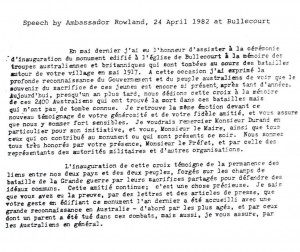
The unveiling of the cross to the memory of the 2400 Australian soldiers who were killed but have no known graves was on the 24 April 1982. Individual families placed small metal plaques
on the stones of the cairn in memory of their relatives.
1982 saw the beginnings of the Anzac Day ceremonies at Bullecourt. For a long time now the ceremony program had been as follows:
1. At midday, we had lunch at the Hendecourt Communal Hall. Australian and French families meet together.

2. After lunch, activities such as showing films, releasing balloons, exhibitions, commemorative tablets, etc, occurred. They preceded the start of the official ceremonies at Bullecourt, which began with a religious ceremony at the Church.
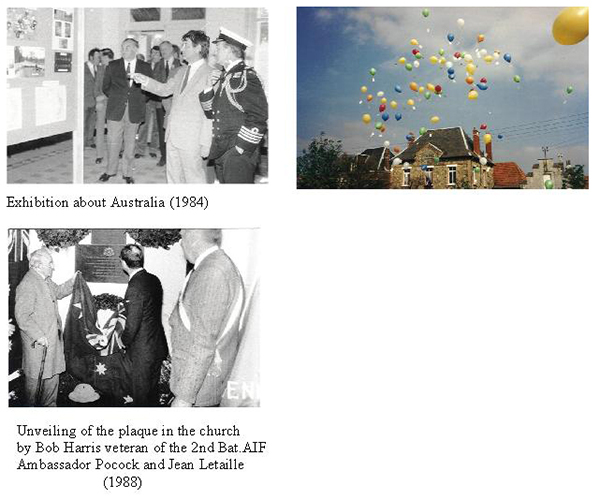
3.In the evening, the ceremonies began with a mass in the church.
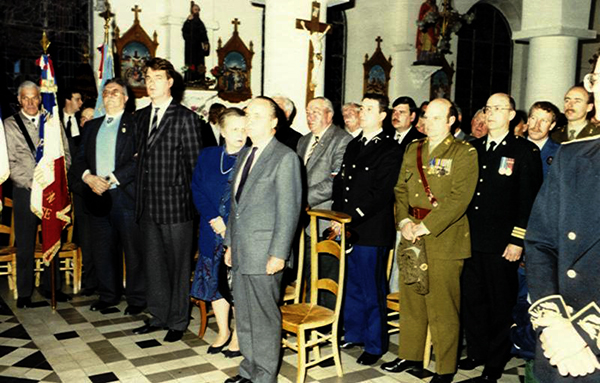
After the mass there was the ceremony at the Australian memorial and the French memorial near to the Church.

1. At night, everybody lit a torch and took place in a procession behind the band, the flags and the military. This was for everyone the highlight of the ceremony. The distance of the procession from the village to the Memorial Cross in the battlefield is 800 metres. It was moving to see this long line of lights during the night. Several old veterans from the First World War attended the early processions. They were very proud to walk with the people, even if many times the weather was terrible.
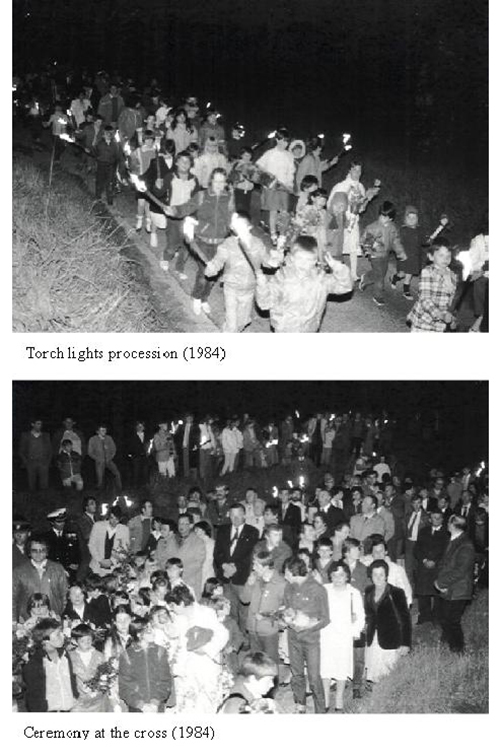
After the ceremony at the Cross, all of the people came back to the village for the Reception at the Communal Hall
After the speeches, the schoolchildren sang popular Australian songs. The day finished with drinks for everyone.
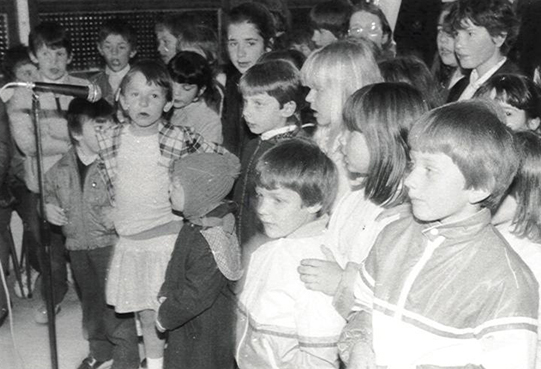
This programme had been maintained for many years. The change occurred before the Australian Government constructed its memorial, when Villers Bretonneux decided to have its annual ceremony on Saturday morning, immediately before the Ceremony at Bullecourt. Our ceremony is now more formal, but it is always attracts a large attendance.
In 1990 the Australian Government decided that it would build a Memorial Park on land donated by Jean Letaille. The centerpiece monument is a stone pedestal, inaugurated by Mr Jones, Ambassador of Australia for Anzac Day, 1991. The next year, on the initiative of Mr Allan Heggen, Director of the War Graves Commission, Peter Corlett was commissioned to sculpt a Statue to install on the pedestal.



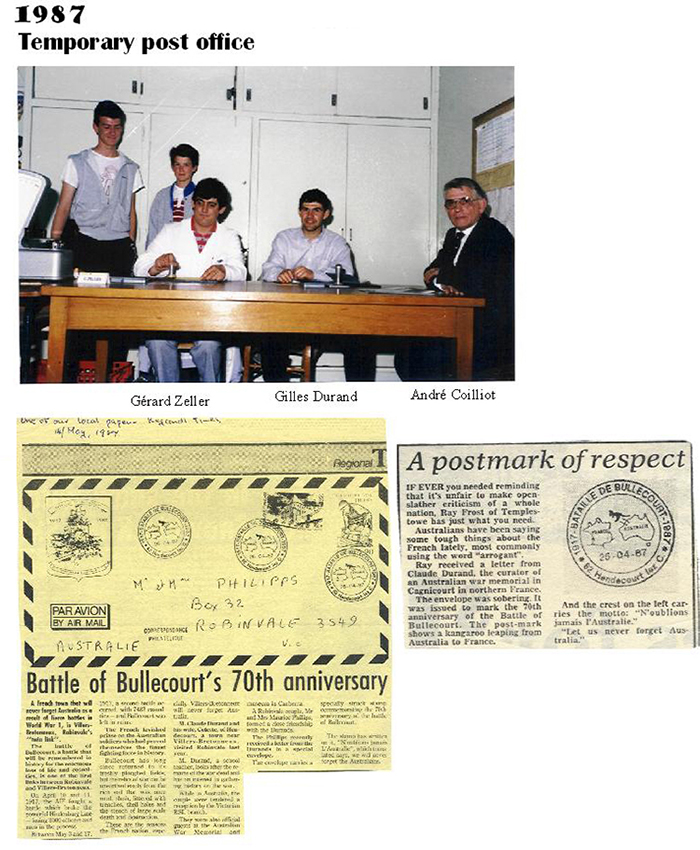






Our thanks to all the people who helped us during all these years in order to keep alive
the sacrifice of many Australian soldiers at Bullecourt
Special thanks to the staff of the embassy in Paris.Defence office:
Richard Arundel RAN
John Steinbach RAAF
Ken Cairns RAAF
Ian Watson RAN
Randall Kingsley RAAF
Cathy Laurent
AWM directors and curators
I.Flemming,N.Flanagan,K.Pearson,Peter Burness
War grave Commission Directors
Alan Heggen
Press and Tv:
Ross Mac Mullin ,Less Carlyon,Ron Austin,John Laffin,Chris Masters,Robin Corfield
Other friends who greatly helped us :
Peter Corlett and Willys Keeble
Kevin O'Brien,Rob Allison,Lambis Englezoos,Monty and Dorothy Wedd,Bruce Ruxton,Georges Cochrane,Keith Dawes,
Brian King,Prudence Cowan ,Graeme Hillier ,and all the families of the soldiers who are on this web site.
Many thanks to all.